This is an excitingly delicious and very easy way to cook fish that we discovered on a birthday trip to Naples, and I believe it to be a rarity, and perhaps unique. Mina, the gentle woman who cooked it for us, told us with quiet pride, “It’s my creation.” Pink peppercorns, coriander seeds and fresh rosemary are liberally scattered over beautiful, fresh bream, and baked with a drizzle of fine olive oil and a sprinkling of sea salt. It’s visually exciting, too. The colours alone are so beautiful it’s a joy to cook and eat.
You might expect this quantity of assertive spice and herb to overpower the fish (or crack a tooth), but to our surprise, the whole seeds toasted to a delightful mellowness that added a gorgeous flavour and delicate crunch to the skin of the fish, and the rosemary was the perfect piney partner to them.
I would not have thought to use these seasonings in combination, nor dared to use them in such quantity with fish, had I not tasted Mina’s signature dish. Since then I’ve cooked it for family and friends with confident gusto, and everyone has absolutely loved it and asked for the recipe.
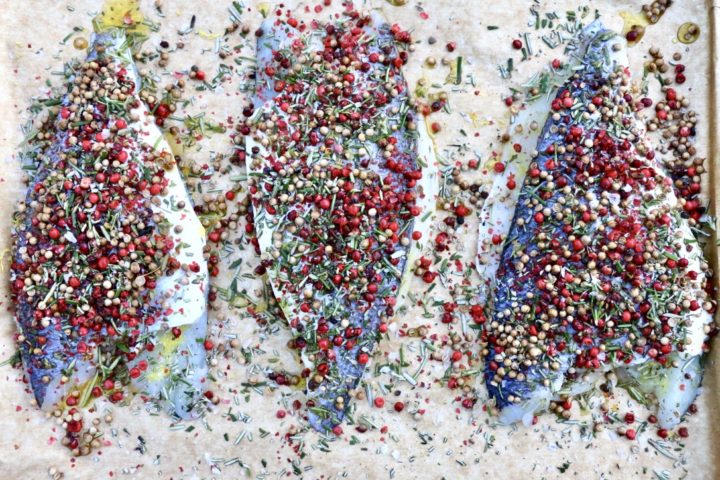 My closest associations with Neapolitan cooking had come from the wonderful tomato gravies, ravioli and eggplant parmesans I grew up eating at Nanny’s table in New Jersey, in the heart of the Neapolitan immigrant community there. I recognised many of the dishes on Mina’s menu, but her fish dish challenged our assumptions about the food of this city until we realised that she was drawing on broader Mediterranean and historical influences in interpreting the ‘piatti tipici’ or typical dishes of Napoli.
My closest associations with Neapolitan cooking had come from the wonderful tomato gravies, ravioli and eggplant parmesans I grew up eating at Nanny’s table in New Jersey, in the heart of the Neapolitan immigrant community there. I recognised many of the dishes on Mina’s menu, but her fish dish challenged our assumptions about the food of this city until we realised that she was drawing on broader Mediterranean and historical influences in interpreting the ‘piatti tipici’ or typical dishes of Napoli.
The cuisine of Italy is of course astonishingly varied, from the Germanic influences in the north, to the Arab influences in the south, especially in Sicily. Before the unification of Italy by Garibaldi in 1861, Italy had been a collection of independent republics and kingdoms ruled variously throughout the centuries by Arabs, Normans, Spaniards and the French. The Kingdoms of Naples and of Sicily were jointly governed at various times as the largest of them: “the Kingdom of the Two Sicilies.” The cuisine of Naples has been enriched over the centuries by all these influences, and by its Greco-Roman roots.
The combination of spices Mina uses for her fish is an expression of her originality as a cook, but each has its place in the cuisines of the Mediterranean, and grows there. Coriander is a spice used in Mediterranean Arab cuisines and in Greece; rosemary is ubiquitous across the Mediterranean; and pink peppercorns grow freely in the region. We’ve seen them growing wild in Sicily, brilliant cascades of pink fruits on tall willowy trees with mimosa-like foliage, where they are foraged and dried for use with meats, fish, fava beans and tomatoes, sometimes with citrus or wild fennel. And of course there’s the olive oil which defines Mediterranean food more than any other single ingredient.
Mina’s treatment for a beautiful fish takes its inspiration from looking broadly across these cuisines and landscapes in a way that’s very modern, and also traditionally Neapolitan. Naples identifies strongly with the south; and as a city blended from so many cultures, it also seems to take a view across borders.
Pink peppercorns are not true peppercorns,[1]but the tiny tree-fruits, sometimes called berries or more accurately, drupes[2], of the Peruvian pepper tree (Schinus molle). This Andean native has widely naturalised in various parts of the world, including the Mediterranean, and is in some places an invasive pest. The inner seed is hard and quite hot – this is the part that resembles a peppercorn. The outer pink husk is papery thin and easily rubbed off, mildly and interestingly spicy.
[1] True peppercorns are the fruits of a perennial vine, the Piper nigrum. Black peppercorns are unripe fruits that have been dried either by the sun or mechanically; green peppercorns are also unripe fruits, but they are treated to retain their colour; and white peppercorns are the seeds, only, of the ripe fruits, with the outer skins removed. Only the pink peppercorn is a member of a different botanical family.
[2] A drupe is a tree-fruit that has one small seed.
Pink peppercorns add colour and a sweet spicy dimension to peppercorn blends, and are used to flavour vinegars and mustards, gins, ice creams and chocolate. They’re marketed by UK supermarkets to accompany ham, and recipes abound in different cultures for using them with steak and with fish, especially salmon. They are often used as a pickling or curing spice in Scandinavia. I’ve used them alongside rosemary for years in potato rosti, which I think is pretty special. But they haven’t always been used with such enthusiasm.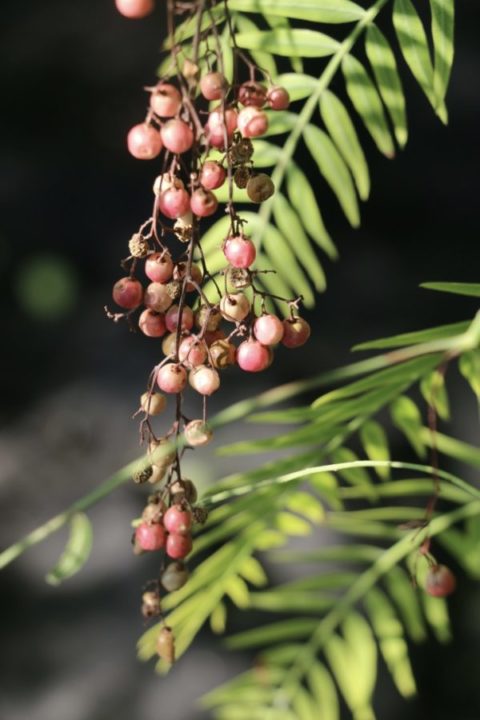 In the early 1980s, imports of pink peppercorns from the Brazilian pepper tree (Schinus terebenthifolius), a relative of the Peruvian species seen in Sicily, but smaller and with broader leaves, were banned by the US Food and Drug Administration on grounds of potential toxicity. The French, who had long used them, had begun marketing them in the States, where they were initially fashionable as a star of nouvelle cuisine. Within a couple of years, there were reports of some people having serious allergic reactions to them. In the absence of definitive evidence on who was at risk, imports were temporarily ceased; and though pink peppercorns in circulation were not recalled, chefs who had initially embraced them became reluctant to use them.
In the early 1980s, imports of pink peppercorns from the Brazilian pepper tree (Schinus terebenthifolius), a relative of the Peruvian species seen in Sicily, but smaller and with broader leaves, were banned by the US Food and Drug Administration on grounds of potential toxicity. The French, who had long used them, had begun marketing them in the States, where they were initially fashionable as a star of nouvelle cuisine. Within a couple of years, there were reports of some people having serious allergic reactions to them. In the absence of definitive evidence on who was at risk, imports were temporarily ceased; and though pink peppercorns in circulation were not recalled, chefs who had initially embraced them became reluctant to use them.
Both species of pepper tree that produce pink peppercorns are in the same family (Anacardiaceae) as the cashew, pistachio and mango – as well as poison ivy, poison oak, and poison sumac. The US ban on imports was lifted when the French provided evidence of safety for general consumption, and it is now generally accepted that the pink peppercorn is a potential risk only to people with sensitivities to these other plants.
Pink peppercorns have been widely available in the UK and again in the US for some time now. I’ve seen some spice merchants in the US include warnings that pink peppercorns are related to cashews and may produce an allergic response in people with allergies to tree nuts; while UK law requires identifying nuts as a known allergen, but not pink peppercorns.
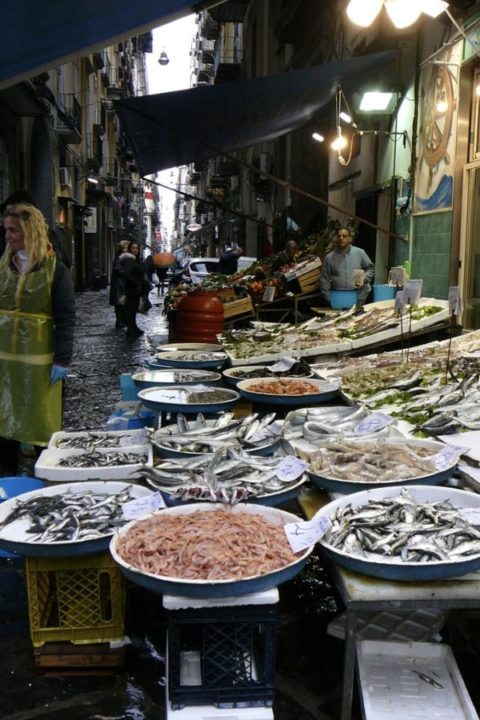 I have to tell you a little more about our very special evening at Mina’s table, because it wasn’t the usual evening out, and all the more memorable for it.
I have to tell you a little more about our very special evening at Mina’s table, because it wasn’t the usual evening out, and all the more memorable for it.
It was a miserably wet, cold February night, and we’d gotten lost in the narrow dark alleys of old Napoli before sloshing back, sodden, to our hotel. It took some motivation to get out in the elements again and risk another pair of shoes, but we were celebrating a birthday, we were hungry, we were in Italy! We’d spotted an osteria that morning on the Piazza Bellini just opposite, so made for it without highest expectations, but with a certain amount of faith as it’s hard to be badly fed in Italy.
The piazza and the streets were completely deserted, abandoned to overflowing gutters and whipping wind. The little sidewalk café that had looked so inviting in the sunshine seemed abandoned in the torrent, so we stepped uncertainly into the plastic marquee that formed its winter walls and peeped into the kitchen to see a grandmotherly figure on her own, wearing chef’s whites and a look of surprise on her kind face. She warmly beckoned us to the driest part of the shelter, with little English (we had even less Italian) — just a shy smile and sympathetic gestures. She reached up to light the brazier to keep us warm, but couldn’t quite manage the height, so David helped; and to fill the moments while we waited for it to ignite, we all broke into a momentary dance, spontaneous and funny, and gave in to that other universal language, and laughed. It was a sweet start to a magical evening. We knew by then we had chanced on an angel and were in good hands.
We were Mina’s only customers the entire evening, and she did everything herself — the magnificent cooking, the serving, the clearing…, and she even ran out in the rain, huddled under her brolly, to get us a bottle of wine from the place next door. Everything she made us that night, from the homemade pistachio pasta with swordfish that we had to start, to the whole bream baked with these amazing spices, was heart-warmingly comforting, as well as exquisite. Never mind the deafening rain pounding on plastic just inches away; being at that table with Mina’s food in front of us could not have been more delightful or cosy. It was, as Sam the hobbit says of Lothlorien, like being at home and on holiday at the same time.
Mina is a gifted chef with the knowledge of generations in her hands, and a superb and inventive palette. She truly inspired us with these flavours, and we feel privileged to have tasted her own creation, and thank her for making that February birthday meal so memorable, and the inspiration for many more.
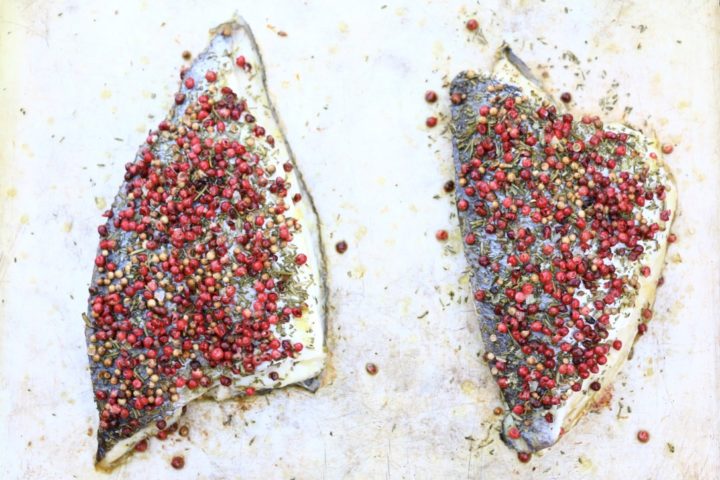 Here is the recipe – though it’s not really a recipe so much as a method you can adapt to many kinds of fish, whole or fillets. The key points are this:
Here is the recipe – though it’s not really a recipe so much as a method you can adapt to many kinds of fish, whole or fillets. The key points are this:
The fish
- Use a moderate oven and choose fish that will bake within 15-20 minutes, as this allows the spices to become fragrant and crunchable without being over-toasted (a tad less time is fine if your fish cooks in, say, 13 minutes).
- You can use whole small sea bream like Mina did, which is an advantage because you can tell how fresh the fish is by looking it in the eye (one small fish will serve one person generously). Or, if you’re serving to people who would struggle with the bones, you can use small fillets and simply double them up, laying one on top of the other with the skins outside to mimic a whole fish without the innards. Problem solved. Two small fillets make a reasonable portion for one person, and you need the double thickness so the fish doesn’t overcook before the spices toast. If using fillets, it’s ideal if you can choose a whole fish and have it filleted for you, but you can of course use ready-to-cook bream fillets (with the skin still on), the fresher the better.
- In my experience, the whole sea bream, as long as they’re the small size indicated in this recipe, cook in about the same time, or marginally faster, than the two small fillets stacked together (by one or two minutes). The whole fish may look a little thicker, but the open cavity means the heat can penetrate to the spine. However, the thickness of your particular fish will determine cooking times, whether you cook fillets or a whole fish, so check it before you expect it to be done to make sure it doesn’t overcook. You want the fish to be juicy, not at all dry.
- The spice and herb coating makes the skin of the bream taste delicious, but you can also use skinless fillets of other fish if you prefer. A loin of salmon, for example, or a large piece of monkfish, are also beautiful with this colourful and crunchy-textured top-coat.
As to how much spice and herbs to use…
Use equal measures of both seeds (about one rounded tablespoon per portion), and a little less chopped fresh rosemary (about one scant tablespoon per portion). Pile all three on until the surface is covered in a single, but generous, layer.
What to serve with it
Mina served her bream to us as a second course with an accompaniment of beautiful local broccoli at the height of its season, cooked with olive oil and garlic. Since we’d had a primi piatti of pasta to start, there was no carbohydrate with the fish. I like putting together an Italian-style menu, too – it’s a great excuse for eating more pasta, in portion sizes that are easier to work off at the gym later. But I’ve more often served Mina’s fish Anglo fashion, as one course, with a green vegetable or side salad, and baby potatoes roasted in their skins on another tray, put into the oven about 30 minutes before the fish goes in.
Mina’s sea bream baked with pink peppercorns, coriander seeds and fresh rosemary
Adapted from Chef Mina’s signature dish, as served to us at A’ Casa Ra’ Signora, in Naples, Italy.
NB: Pink peppercorns are related to cashews and may produce an allergic response in people with sensitivity to tree nuts.
Serves 2
Ingredients
- 2 small, whole fresh sea bream with heads on, cleaned and scaled (300g each, or 10.5 ounces each); OR
- 4 small, fresh sea bream fillets with skin on, scaled and checked for bones (100g or 3.5 ounces each)
- 2 rounded tablespoons whole pink peppercorns
- 2 rounded tablespoons whole coriander seeds
- 2 scant tablespoons chopped fresh rosemary (use only the leaves)
- 2 tablespoons extra virgin olive oil, plus 1 teaspoon
- about 1 teaspoon flaky sea salt (e.g., Maldon), or more as needed
Directions
- Line a shallow baking sheet with parchment paper, and heat the oven to 175C/350F.
- If using whole fish, lightly salt their cavities and lay them on the baking sheet.
- If using fillets, lightly salt the exposed flesh; then put two fillets together to mimic a whole fish, with skin outside. Lay the fillet-stacks on the baking sheet.
- Using a pastry brush or fingers, lubricate the tops of each fish (or fish-stack) with about half a teaspoon of olive oil, spreading it evenly over the surface of the fish. This will help the seeds to stick.
- Sprinkle one rounded tablespoon of coriander seeds evenly over each fish.
- Sprinkle one rounded tablespoon of pink peppercorns evenly over each fish. The fish should be covered with a generous, but single layer, of the two seeds.
- Evenly distribute a scant tablespoon of chopped rosemary over the seed layer on each fish.
- Drizzle 1 tablespoon of the olive oil over each fish, allowing it to soak into the seeds.
- As a final seasoning, sprinkle a good pinch of flaky sea salt over the tops of the fish.
- Make sure the oven is up to temperature (175C/350F). Bake the fish until the spices are fragrant and gently toasted, and the fish feels just firm to the touch, but not hard, at its thickest point. I find that 13 to 15 minutes are usually perfect for fish portions this size, but ovens vary and so do fish, so check progress at about 12 minutes, and give it longer as needed. I doubt you’ll need more than 18-20 minutes; and remember that the fish will continue to set a bit further once it’s removed from the oven. How to tell when it’s ready:
- The flesh should be opaquely white and just flaking, but definitely moist. If still translucent in places, give it a bit more time, checking frequently.
- Check whole fish by lifting from the baking sheet to test the underneath with a knife, close to the backbone where it’s thickest.
- To check the stacks of fillets, lift the top fish up carefully at the thickest point and test the middle with a knife.
- The flesh should be opaquely white and just flaking, but definitely moist. If still translucent in places, give it a bit more time, checking frequently.
- Serve immediately onto warmed plates, and spoon the pan juices over the fish. If serving a whole fish, provide a spare plate for the skeletons. The skins, with their seed and rosemary coating, are deliciously edible.
- UK Food Standards Agency: 14 Food Allergens: https://www.food.gov.uk/business-guidance/allergen-guidance-for-food-businesses
- “Pink Peppercorns: A Gourmet Spice Growing in the Backyard,” Linda Ly. Garden Betty, updated from an article first published December 2, 2014. https://www.gardenbetty.com/pink-peppercorns-a-gourmet-spice-growing-in-the-backyard/
- “When People Panicked Over Pink Peppercorns”, Anne Ewbank. Atlas Obscura, November 16, 2018. https://www.atlasobscura.com/articles/are-pink-peppercorns-poisonous.
- Encyclopedia Britannicaentry on the Anacardiaceae family: https://www.britannica.com/plant/Anacardiaceae
- “The F.D.A and the French Disagree on the Effects of Pink Peppercorns”, by Marian Burros. The New York Times,March 31,1982 https://www.nytimes.com/1982/03/31/garden/fda-and-french-disagree-on-pink-peppercorn-s-effects.html
- Wikipedia entry on peppercorns (Piper nigrum): https://en.wikipedia.org/wiki/Black_pepper
Other fish recipes on Crumbs on the Table:
- Baked hake fillets with potato, tomato and tapenade
- Fish fillets with grilled cucumber and beurre blanc
Other Italian travel-stories and recipes on Crumbs on the Table:
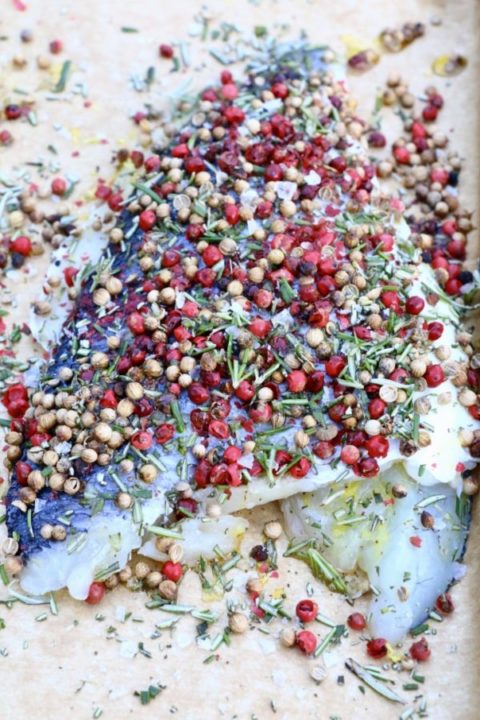
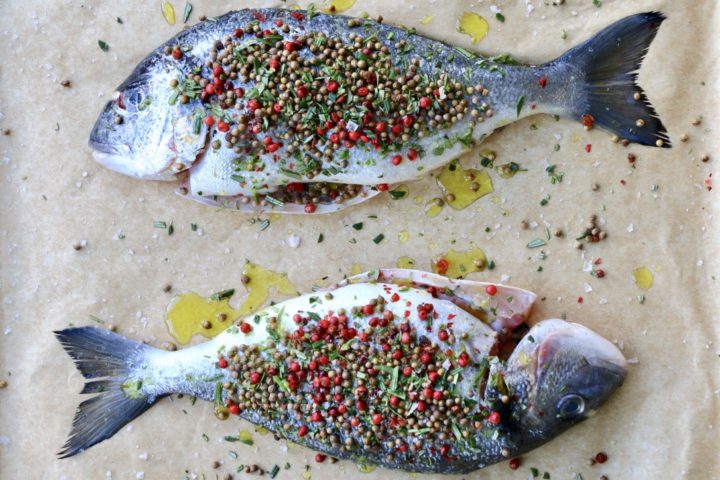
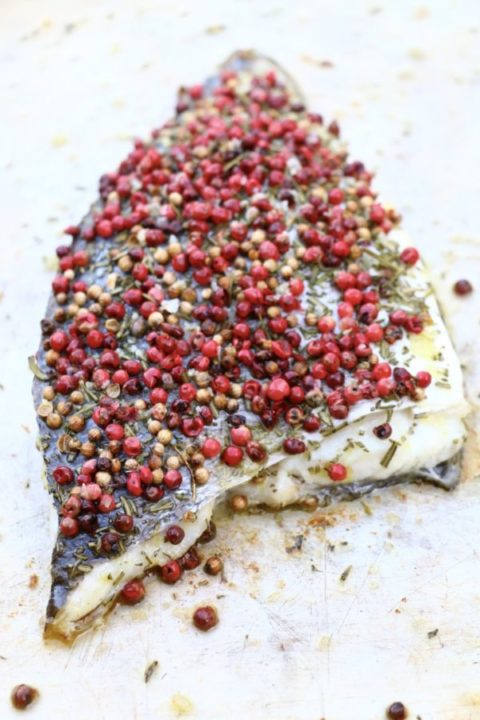
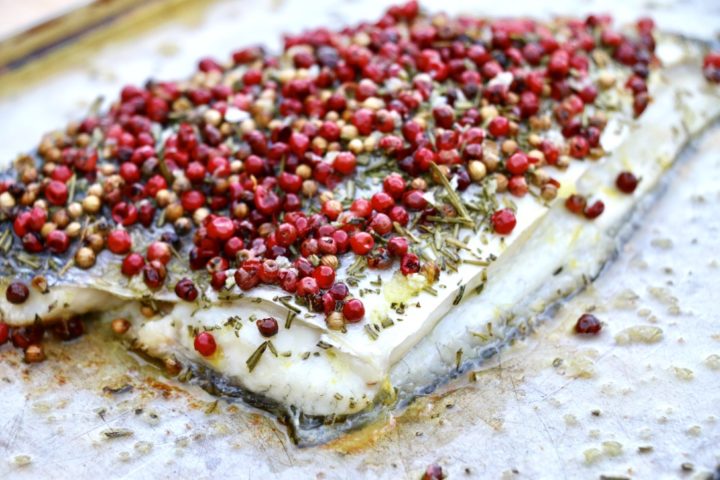
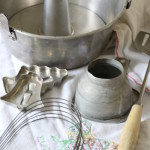


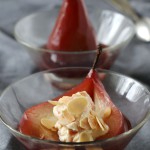
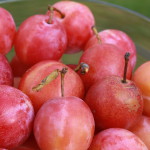
 Tour D’Argent: a remembrance of things past at today’s prices
Tour D’Argent: a remembrance of things past at today’s prices Apricots, les abricots
Apricots, les abricots I used to cook in a piggery
I used to cook in a piggery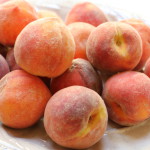

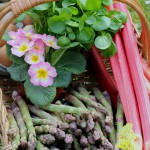


 Seed cake and story
Seed cake and story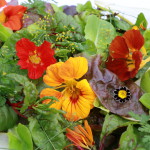



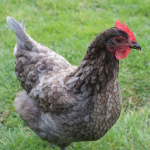
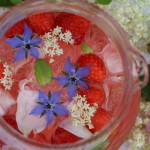
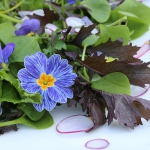

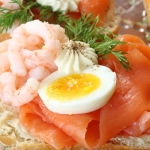
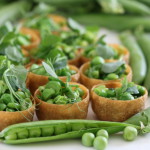

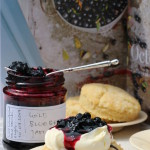
 Easter is late this year
Easter is late this year
This looks fabulous and I’ll try it with either salmon or chicken breast (NOT at the same time, I hasten to add), as I have become allergic to fish for some reason…. Laura’s recipes can always be adapted so easily. The secret of an excellent cook, I suppose….